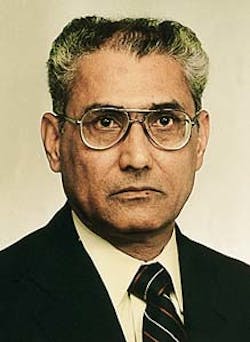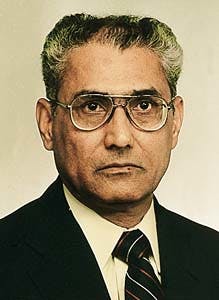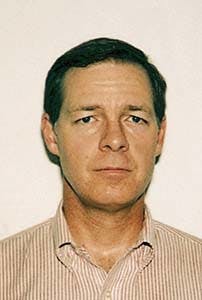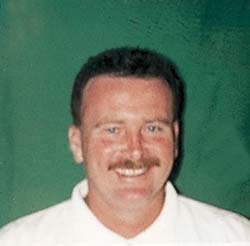New test identifies completion fluid compatibility problems
Syed A. Ali, David C. Shelby, D.C. Wagner
Chevron U.S.A. Production Co.
New Orleans
William E. FoxenbergA new test procedure simulatates reservoir conditions to improve the accuracy for determining completion fluid/crude oil compatibility.
OSCA
Laboratory and field studies1 have shown that calcium chloride, calcium bromide, and zinc bromide-based completion fluids can destabilize crude oils to produce a stable emulsion or sludge. This destabilization can severely damage the formation, but can be overcome readily by addition of nonemulsifiers and mutual solvents.
Consequently, high-density brines should be pilot-tested for compatibility with crude oils prior to field applications.
Completion fluids
Chloride and bromide salts of calcium and zinc are widely included in completion and workover operations to formulate high-density brines. Because these fluids can provide hydrostatic well control without solids, high-density brines have become the workhorse of the completion industry.As pure solutions, high-density fluids are inherently stable and relatively compatible with both well operations and hydrocarbon-bearing formations. Nonetheless, high-density brines are most economical when completion and workover operations are engineered to minimize fluid losses to the productive interval. This results in reduced fluid costs and enhanced well productivity.
The current industry-accepted test procedure for brine compatibility was found to be inadequate in simulating the downhole performance of brine additives such as surfactants and mutual solvents.
Reliance on the current technique for determining crude oil/brine compatibility or for selecting an effective nonemulsifier treatment may lead to a false sense of security and misapplication in the field. Therefore, a new test procedure was developed to more accurately simulate reservoir conditions.
Testing procedures
The study used crude oils from South Timbalier, East Cameron, and South Marsh Island fields in the Gulf of Mexico.Compatibility tests first were conducted with standard nonemulsion tests in which a 50/50 mixture of crude oil and high-density brine (with and without nonemulsifier) was mixed under low-shear conditions in a glass jar and allowed to stand in a hot water-bath at 170° F.
Low-shear mixing was accomplished by pouring 20-40 ml of crude oil and 20-40 ml of brine in a screw-capped, 100-ml glass jar and vigorously shaking through an arc of about 45° for 60 sec. Phase separation was then determined.
For these tests, compatibility is defined by a 95% phase separation within 30 min at a specified temperature. In addition, brine wettability is evaluated by observing the interaction of the brine and the surface of the glass jar.
Poor wettability is considered evident if the brine "clings" to the glass and does not freely move along its surface. The interface between brine and oil is also inspected, whereby the most effective system is one providing the most distinct phase separation.
The standard nonemulsion tests were then followed by a sand-pack filtration in which the brine system was first filtered through a sand-clay filter pack, 40 g of pack material and 40 ml of brine. This filtration procedure simulates the stripping of surfactant as a brine penetrates the formation.
The sand-packed materials2 consisted of 80 wt % 100-mesh sand, 10 wt % bentonite, and 10 wt % fine silica flour.
Initially, the sand pack was formed using a dry packing method. First, preweighed sand-pack material was loaded into a filtration cell (Buchner-type funnel) equipped with a Whatman No. 4 filter paper on the bottom, and a vacuum was applied for 5 min. This procedure created a very tight sand pack.
The brine system was then poured on top of the surface and filtered through the pack under vacuum. After collecting the filtrate, 20 ml of it were tested for nonemulsion tendency. This method proved time-consuming because of the slow filtration rate through the dry sand pack.
A second sand-packing method was then investigated in which the sand pack was formed in the sand-brine slurry itself, using 40 ml of brine and 40 g of pack material. The slurry was mixed with a stirring rod or spatula for 1 min, poured into the Buchner funnel (containing a Whatman No. 4 filter paper) and, with the aid of a vacuum pump, the brine effluent was collected.
This slurry-packing procedure was expected to filter at a quicker rate than experienced with the dry packing method and, at the same time, provide more intimate contact between the solids and brine.
Test results
Table 1 [71,281 bytes] demonstrates that the South Timbalier crude oil was incompatible with the 13.8 ppg CaCl 2-CaBr 2 completion fluid, producing an emulsion that did not break within 1 hr at 170° F.Prior to the sand-pack filtration, nonemulsifiers improved brine compatibility by preventing formation of a tight emulsion; however, Nonemulsifier Z failed to meet the criteria of 95% emulsion-break within 11/2 hr.
Both Nonemulsifiers B and C were effective at low concentrations. As indicated in Table 2 [64,718 bytes], the nonemulsifiers were stripped from the mixture as it flowed through the sand pack, significantly reducing effectiveness.
A comparison of Tables 1 and 2 shows that Nonemulsifier B was at least 20 times less effective after filtration.
Based on prior laboratory testing and field application,2 a combination of mutual solvent and Nonemulsifier B was tested and proved effective. Because the mutual solvent was ineffective as a stand-alone additive, it is speculated that the benefit of its addition is its ability to "pull" surfactant through the sand pack.
Table 3 [80,493 bytes] shows the effects of the sand-packing method on the compatibility results (dry pack vs. slurry pack). It appears that the slurry-pack method does provide a more intimate contact between solids and the brine.
As shown in Table 4 [42,688 bytes], the East Cameron crude oil proved only slightly incompatible with high-density brine containing zinc bromide (15 ppg CaCl2-CaBr2-ZnBr2). The surfactant nonemulsifiers were tested to improve break-out times and wettability characteristics. Nonemulsifier Z in the brine increased the crude-brine compatibility (Table 4, Fig. 1 [7,774 bytes]).
Addition of a combination of 1% Nonemulsifier B and 1% Egmbe (ethylene glycol monobutyl ether) to the brine produced a 100% breakout of emulsion within 15 min with excellent wettability and phase separation (Table 4, Fig. 1). However, as shown in Table 5 [40,944 bytes] and Table 6 [42,614 bytes], filtration of treated brines through a slurry sand pack decreased nonemulsifier effectiveness.
Brines containing either Nonemulsifier Z as a single additive or Nonemulsifier B with Egmbe were not compatible with crude oil after filtration (Table 5, Fig. 2 [5,147 bytes]). However, brine containing 0.5% Nonemulsifier Z and 0.5% Egmbe produced a compatible mixture even after filtration.
The South Marsh Island crude oil was incompatible with a 14.0 ppg CaCl2-CaBr2 completion fluid (Table 6). Nonemulsifier C provided complete protection against emulsion formation when tested according to the standard procedure. Once again, however, part of the surfactant was stripped by the filter pack.
To maintain protection against emulsion formation, either additional nonemulsifier or addition of a small amount of mutual solvent was required.
Findings
The study found the following:- The standard nonemulsion test procedure was found to be inadequate in simulating the downhole conditions.
- The slurry-pack test method more accurately simulates reservoir conditions.
- Nonemulsifiers added to brines to prevent emulsions may preferentially adsorb onto formation mineral surfaces. This adsorption prevents the nonemulsifiers from being available in the brine-fluid front where formation-damaging emulsions can form. The addition of small amounts of mutual solvent can carry the surfactant deeper into the formation.
- High-density brines should be pilot-tested utilizing the slurry-pack method for compatibility with formation crude oils prior to field applications.
Acknowledgments
We thank the management of Chevron U.S.A. Production Co. and OSCA Inc. for permission to publish this article. Contributions by Jeff Smith and Mingie Ke are gratefully acknowledged.References
- Ali, S.A., Durham, D.K., and Elphinstone, E.A., "Test identifies acid-fluid/crude compatibility problems," OGJ, Mar. 28, 1994, p. 47.
- Foxenberg, W.E., Ali, S.A., and Ke, M., "Effects of Completion Fluid Loss on Well Productivity," Paper No. SPE 31137, 1996.
The Authors
Syed A. Ali is a technical advisor for Chevron U.S.A. Production Co. in New Orleans. He specializes in sandstone acidizing, formation damage control, rock-fluid interaction, mineralogy, and oil field chemistry. Syed has an MS from Ohio State University and a PhD from Rensselaer Polytechnic Institute. He is a member of SPE and AAPG.
David C. Shelby is a completion engineer with Chevron U.S.A. Production Co., New Orleans. He has held various engineering positions with both Gulf Oil Corp. and Chevron. Shelby is a graduate of Texas A&M and a member of SPE and AAPG.
D.J. Wagner is a petroleum engineering senior advisor for Chevron U.S.A. Production Co., Lafayette, La. He is responsible for the technical support on completions, stimulation, workover, and well performance evaluation for Chevron's Gulf of Mexico operations. Wagner has a BS in petroleum engineering from Penn State University. He is a member of SPE and AADE.
William E. Foxenberg is the product line manager for clear brine fluids with OSCA Inc. in Lafayette, La. He has 17 years' experience in applying new technology to field operations. Foxenberg holds a BS in chemistry from the State University of New York, Syracuse. He is a member the American Chemical Society, Society of Petroleum Engineers, and National Association of Corrosion Engineers.
BOOKS
Well, Well, Well..., by Rick Wilkinson. Published by Christopher Beck Books, 64 Massey St., Ascot, Queensland, Australia, 4007. 261 pp. This book contains an interesting account of the origins of the names of wildcat oil and gas wells in and around Australia. The author looks into the history of wells named after flora and fauna, ships, astronomical events, early navigators, race horses, literary characters, vineyards, mythology, and aboriginal words. Some of the more unusual names uncovered have even been traced back to wives, girlfriends, slang words, long lunches, and other whims and oddities.Fluid Catalytic Cracking: Technology and Operation, by Joseph W. Wilson. Published by PennWell Publishing Co., P.O. Box 21288, Tulsa, Okla. 74121. 400 pp., $99.95.
Successful operation of the fluid catalytic cracking unit is critical to the operating success of most refineries. It is the dominant coversion process and the major contributor to "value added" in the refinery.
This book provides the reader with a thorough understanding of the principles and practices of the FCC process as well as the requirements for its maximum contribution to refinery operations and profitability.
Copyright 1997 Oil & Gas Journal. All Rights Reserved.




